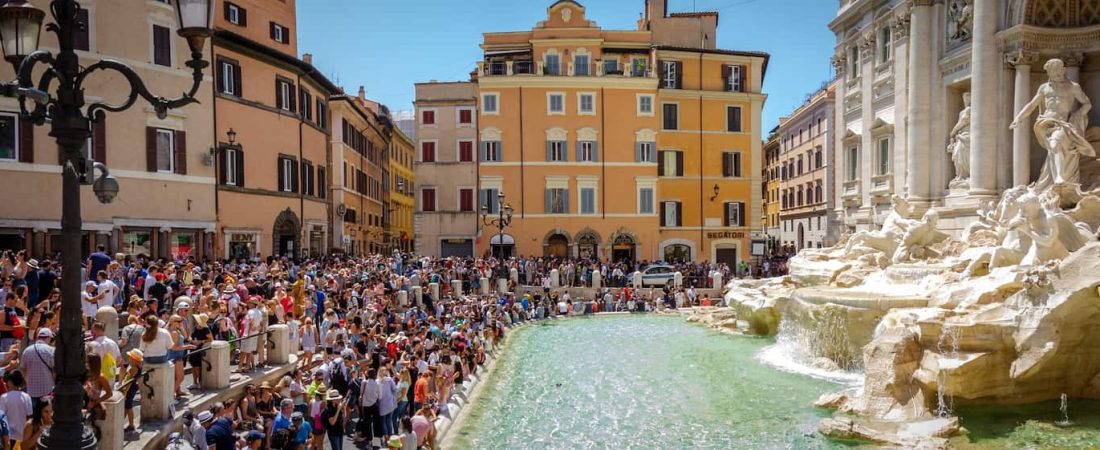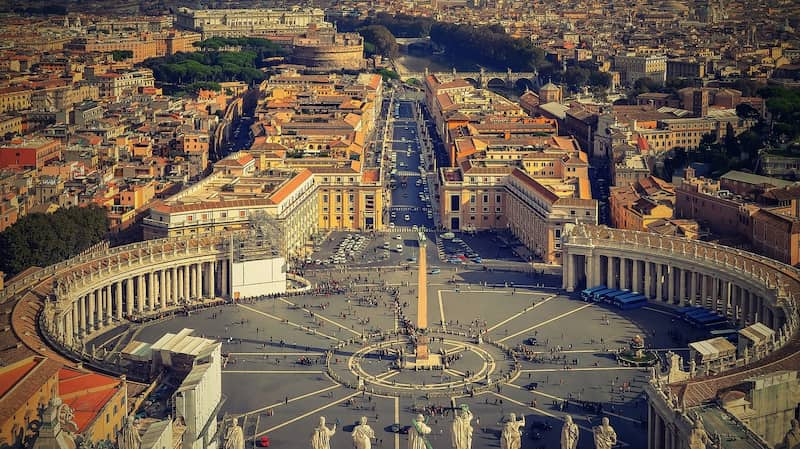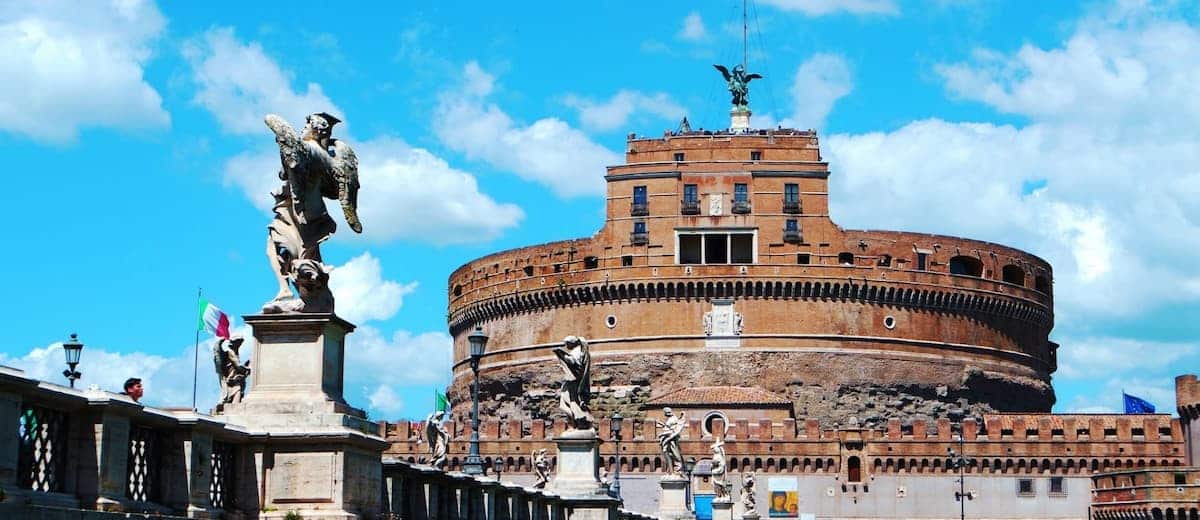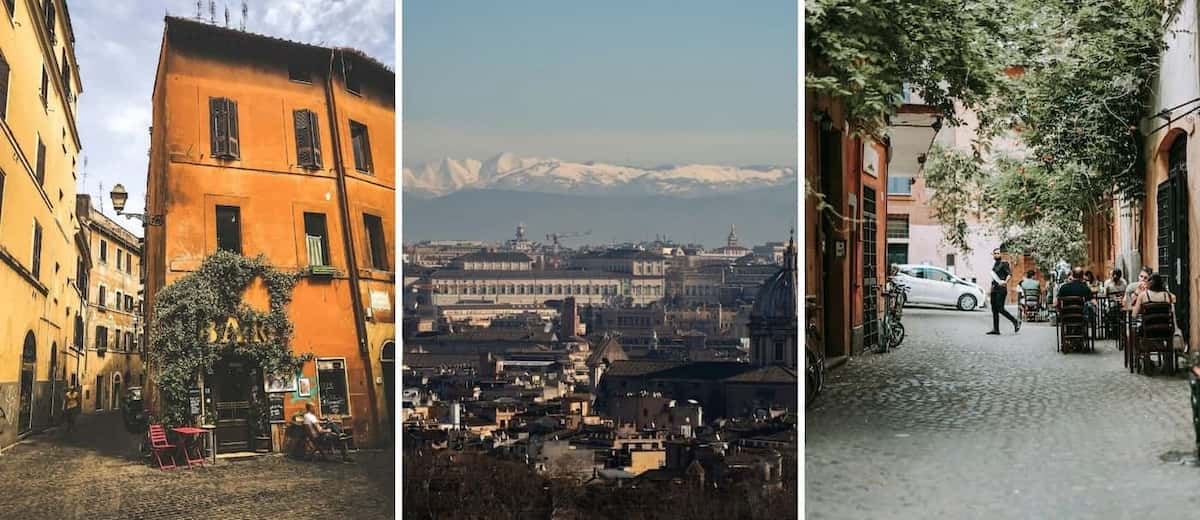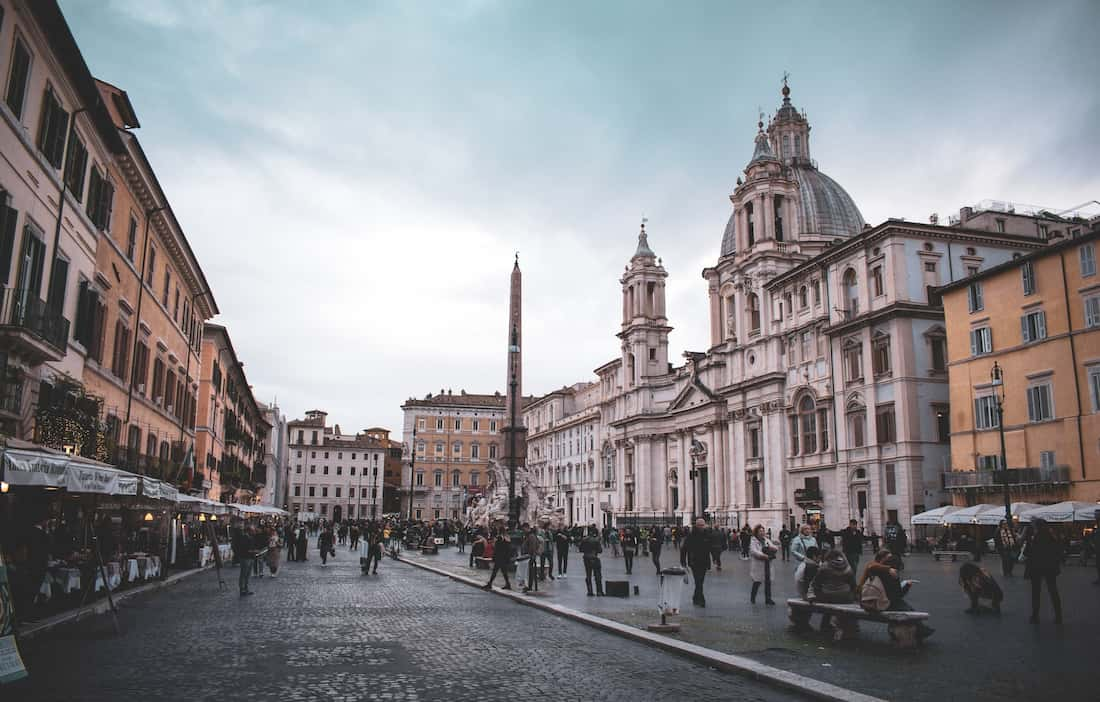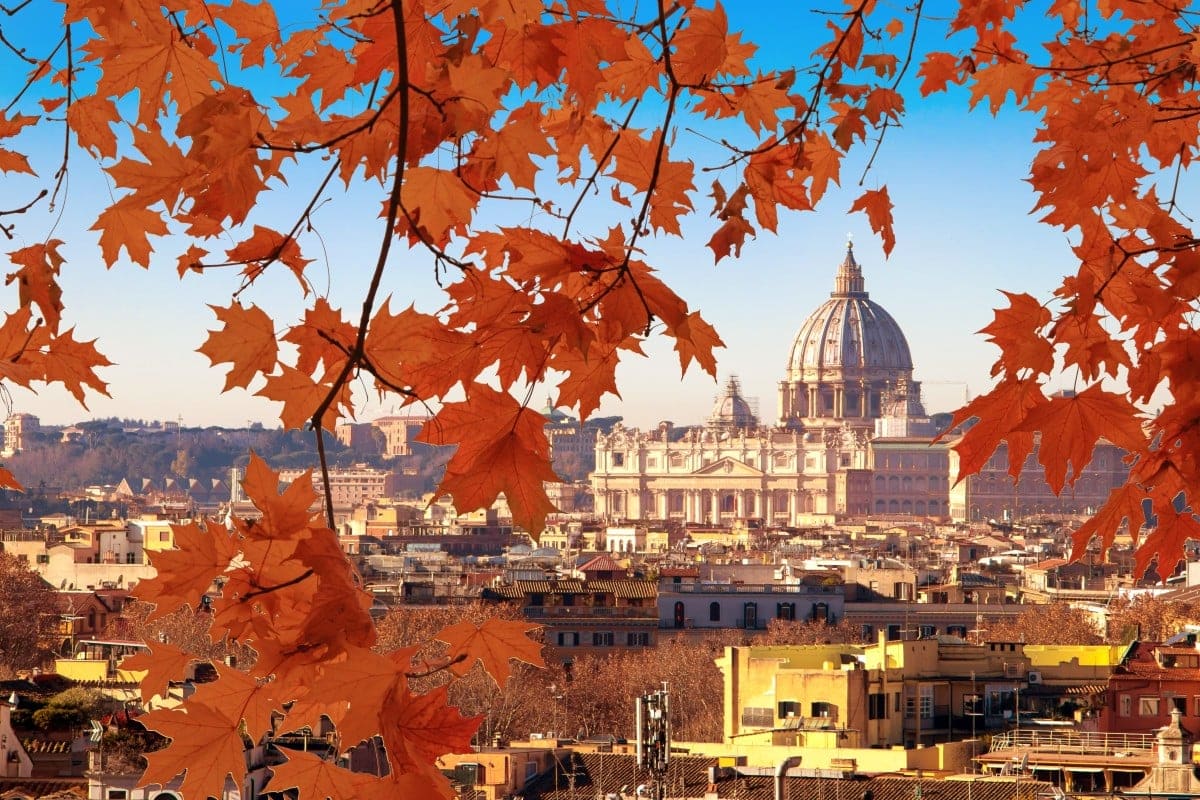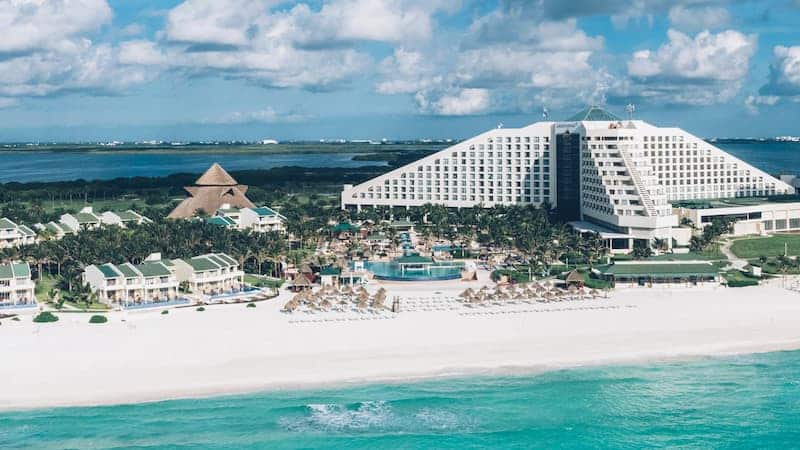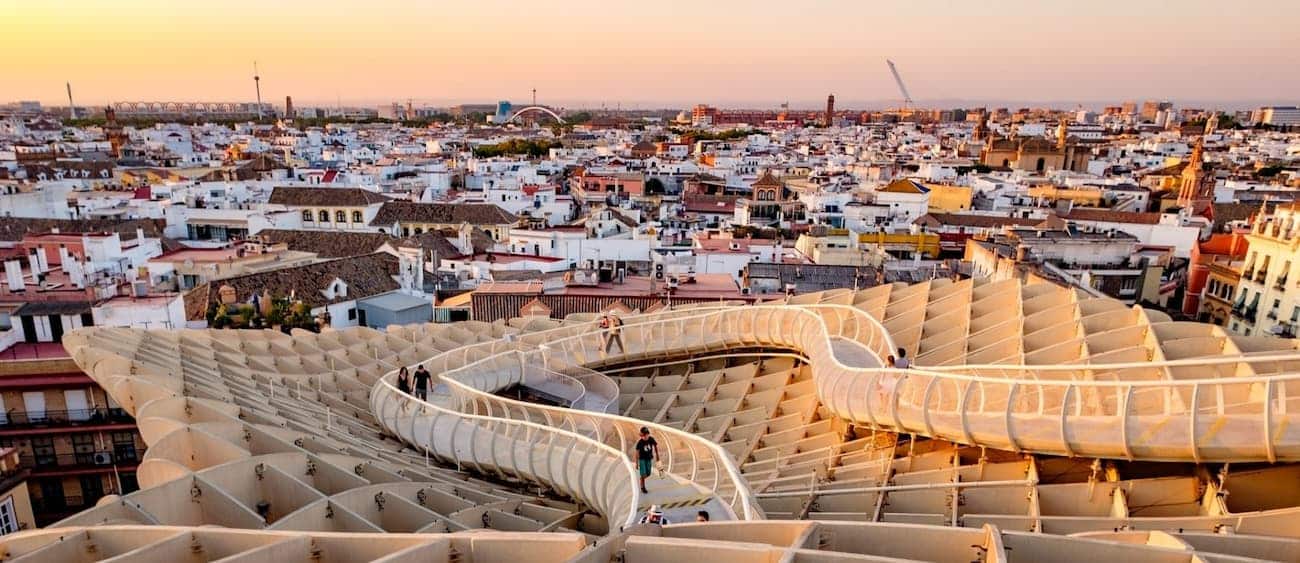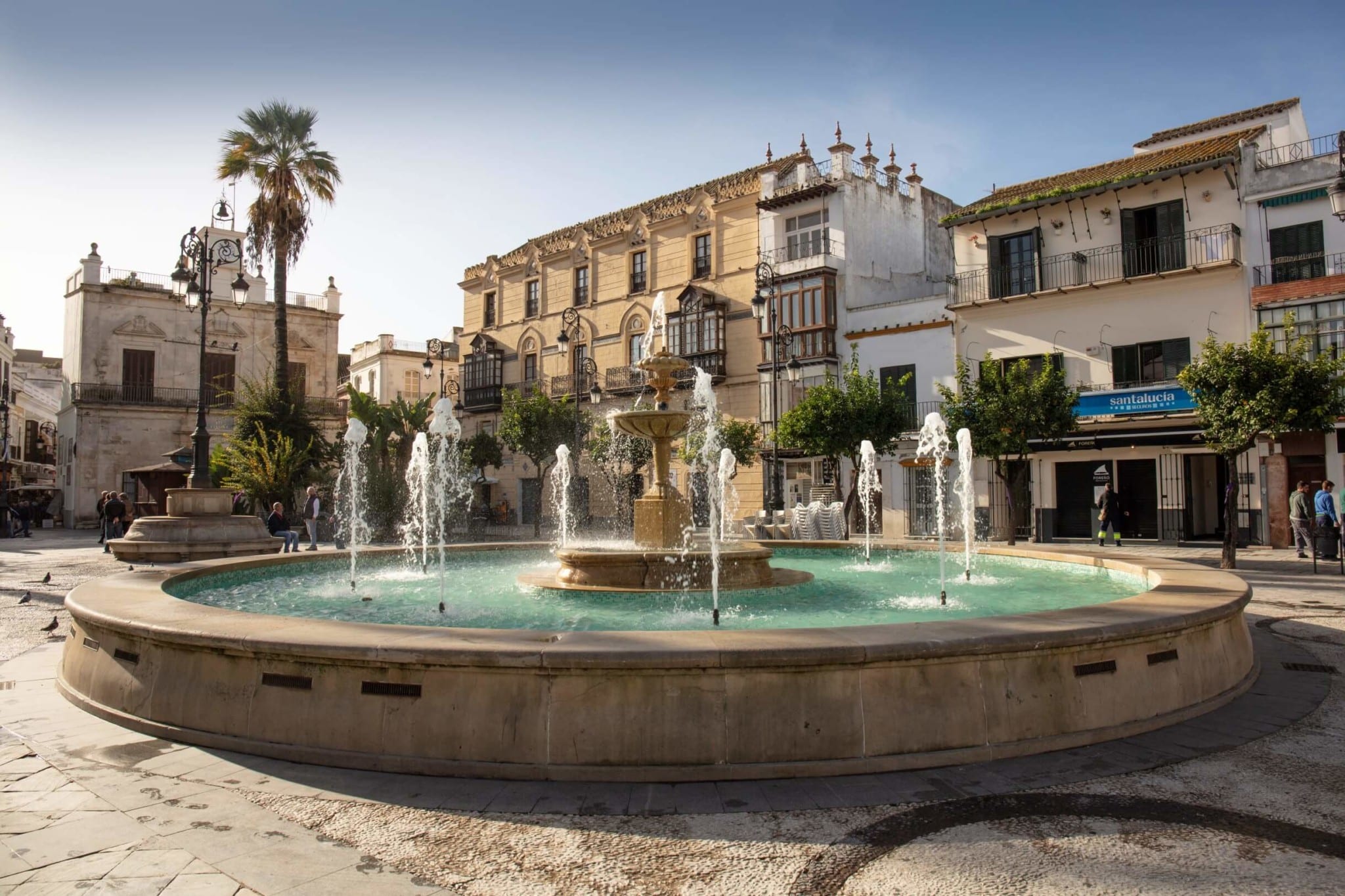There is a well-known phrase that maintains the following: “Rome was not built in a day.” Undoubtedly, that is evident when you pay attention to all the options, whether in architectural, cultural and of course historical terms, that the city has to offer, it is a really impressive place.
This city is the capital of Italy, one of the most important cities in all of Europe, and is known as the “Eternal City”. Walking through Rome is not only about getting to know a new place but is an experience in itself, coming into contact with monuments and spaces that have existed for thousands and thousands of years and that, at the same time, coexist with others that are completely contemporary.
There is another sentence that says that “All roads lead to Rome” and it may not always be easy to choose what to do and more when you do not have much time and you have to choose what to do and what not to do. That is why we decided to put together this list of 12 things and places to see in Rome in 2 days, so that you can make the most of your stay and enjoy places that are truly unmissable.
12 things to see in Rome in 2 days
Taking into account that you only have 48 hours to get to know some of the most important places in the city, we decided to put together a list of places that you cannot miss, that are relatively close to each other and that each of them will leave you something special about the city. We hope you enjoy it to the fullest, these are our recommendations for your visit to Rome in 2 days.
Here we go.
1. Sistine Chapel
If you are going to know Rome in 2 days, one of the places you have to visit is the Sistine Chapel, or Capella Sistina as it is known in Italian, as it is one of the most popular temples in the world. It is known as one of the great works of the artist Miguel Ángel, although in reality there are several artists who worked together to create this completely exceptional work of art.
Its construction began in the year 1473 and its inauguration took place on August 15, 1483. Among the painters who were part of the initial project are Pietro Perugino, Domenico Ghirlandaio, Sandro Botticelli and Cosimo Rosselli. In the year 1508, the artist Michelangelo was asked to paint the vault, a job that was completed some four years later, and years later he was in charge of painting The Last Judgment in the altar wall.
It is part of the Vatican Museums and in order to visit it it is necessary to buy the ticket that includes the group of museums, since it is not possible to acquire the pass only to visit the Sistine Chapel.
It should be noted that although the Sistine Chapel is technically located within the city-state of Vatican, we include it among the things to see in Rome since it is a city within from the big city. Also, it would be a shame to miss out on something so amazing.
Tickets are obtained in advance through the official website of the Vatican Museums and the opening hours vary depending on the station. In summer, it opens from Monday to Thursday, from 8:30 a.m. to 6:30 p.m., and Friday and Saturday, from 8:30 a.m. to 10:30 p.m.; while from November 2 to On July 1 it can be visited from Monday to Saturday from 8:30 a.m. to 6:30 p.m.
Data to keep in mind: the church is not open on Sundays except the last Sunday of each month, when admission is free.
2. St. Peter’s Square
Among all the places that we recommend you to see in Rome in 2 days we also include, of course, the most famous square in the world. Not only because it is an unmissable place, but also considering that you only have two days to get to know the city, it is not a bad plan to take advantage of visiting all the places that are nearby and that, in addition, are shows.
St. Peter’s Square is 320 meters long and 240 meters wide, and is located right next to the St. Peter’s Basilica. It was built between 1656 and 1667, under the supervision of Bernini, and has come to accommodate more than 300,000 people.
The square is not only imposing because of its size, but it is also bordered by 284 columns and 88 pilasters. In these columns there are some 140 statues of saints that were made by the disciples of Bernini in the year 1670. On the other hand, in the center there is an obelisk and two fountains, one by Bernini and the other by Maderno. The obelisk, meanwhile, was transferred from Egypt.
St. Peter’s Square is just 200 meters from the basilica and 260 from the Sistine Chapel. In addition, it can be entered for free.
3. Patio de la Piña
The Patio de la Piña is part of those that surround all the institutions known as Vatican Museums. It was built in 1506 by the architect Donato Bramante, in order to communicate the Palace of Innocent VIII with the Sistine Chapel and was divided into three areas.
This courtyard, located between the Library Courtyard and the Belvedere Courtyard, receives its name in honor of the large bronze pineapple that it has, about four meters high and which is usually the protagonist of more than one photograph. It is worth noting that the pineapple is not the only bronze statue that can be found in this place, but there are several that stand out.
Some of the statues that can be found in this incredible courtyard that you cannot miss on your tour of Rome in 2 days, are some peacocks that were brought from the Villa of Adriano; the sphere with sphere, also known as the concentric spheres, built by Arnaldo Pomodoro; and, finally, the bronze pineapple, after which this patio has been named.
4. Castel Sant’Angelo
Castel Sant’Angelo, known as Castel Sant’Angelo in Italian, is one of the few buildings, if not the only one, that has witnessed the development of the city of Rome for some 2,000 years. It was built in 123 AD and, without a doubt, during all this time, it has undergone modifications of all kinds, both structural and architectural, but it is still a place worth visiting.
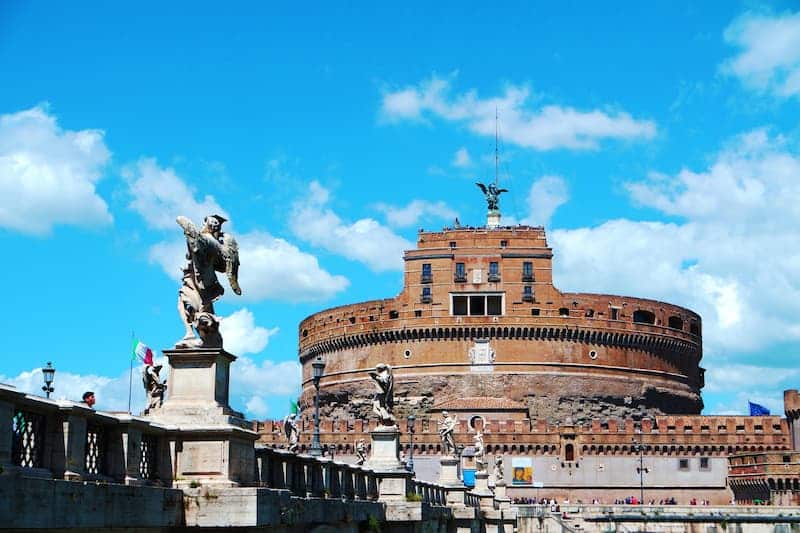
Photo by Michele Bitetto on Unsplash
Over time, this site has been a military fortress, a prison, a Renaissance residence, until today as a museum and venue for cultural and social events. Without a doubt, a place that you must take into account for your pass through Rome in 2 days.
It is located on the banks of the Tiber river, the third longest in Italy, and in front of the Sant’Angelo bridge, which used to be known as Pons Aelius. It has five levels and is accessed through a ramp that is in a spiral, and from where you can access the chamber of the ashes and cells where some historical figures were locked. In addition, it also has a terrace from which you can have a panoramic view of Rome that is not to be missed.
This castle / museum can be visited every day of the week, from 9 a.m. to 7:30 p.m.
5. Piazza Navona
Piazza Navona or Piazza Navona is a classic and outstanding urban space in the city, essential on your walk through Rome in 2 days. It is characterized by having an elongated shape and attractions such as the Fuente de los Ríos, which has four figures that represent the most important rivers of the four continents and on it is an Egyptian obelisk.
Another of the works that stand out in this square is the church of Sant’Agnese in Agone, located next to the fountain, and has two other minor fountains, one at each end of the square. The one at the extreme north is called Fontana di Nettuno, while the one at the extreme south is called Fontana del Moro.
During the tour of the square you will find other outstanding monuments such as the Church of the Oyster Signora del Sacro Cuore, the Cupis Palace, the Torres Massimo Lacellotti Palace, and the Braschi Palace, among others.
6. Piazza Venezia
If all the streets of Rome led to a single destination, it would probably be Piazza Venezia. It is an open square where more than 10 avenues converge. The way it looks today in This day is not exactly the same as it had from the beginning, since between the 19th and 20th centuries it underwent several demolition and reconstruction interventions.
It extends between Via del Corso and Via Dei Fori Imperial i, and it takes the name of the 15th century palace, ordered to be built by Cardinal Pietro Balbo, which is called < strong> Venice Palace. It should be noted that between 1923 and 1943, this was the place from which Mussolini delivered his speeches, the palace being the seat of the Head of Government and the Great Council of Fascism.
Other prominent places that can be accessed from the square are the l National Institute of Archeology and Art History, the National Museum of the Palace of Venice, the Bonaparte Palace and the monument in honor of Vittorio Emanuele II. Undoubtedly a key point for your tour of Rome in 2 days.
7. Colosseum
It is clear that if we are talking about the Italian capital, the Colosseum is something that cannot be missing from a list of places that you have to see practically yes or yes, that is regardless of whether the tour is from Rome in 2 days, 3, more or less. It is an unmissable place, no matter how long you are going to stay there.
The Colosseum was built in the 1st century AD and was a space where fights between gladiators, animals or other types of fights took place. It is an amphitheater, and it was the largest ever built during the Roman Empire. Although its structure is severely damaged for various reasons, it remains one of the most imposing monuments in the capital of Italy and is often seen as an icon of imperial Rome.
It can be visited every day, except January 1 and December 25, and the opening hours vary according to the season. From the end of April to July, the hours are from 10:30 to 19:15; from July to September the opening hours are one hour ahead; and from September to April the hours are from 9:30 a.m. to 7:00 p.m. Regarding tickets, it is advisable to get them in advance from the official page of the Colosseum.
8. Arch of Constantine
The Arch of Constantine is located between the Colosseum and the Palatine Hill, and was built in 315 in order to commemorate the victory of Constantine I. It is one one of the best preserved ancient monuments of the Italian capital is and, in fact, it is one of the most modern arches that have been made in ancient Rome.
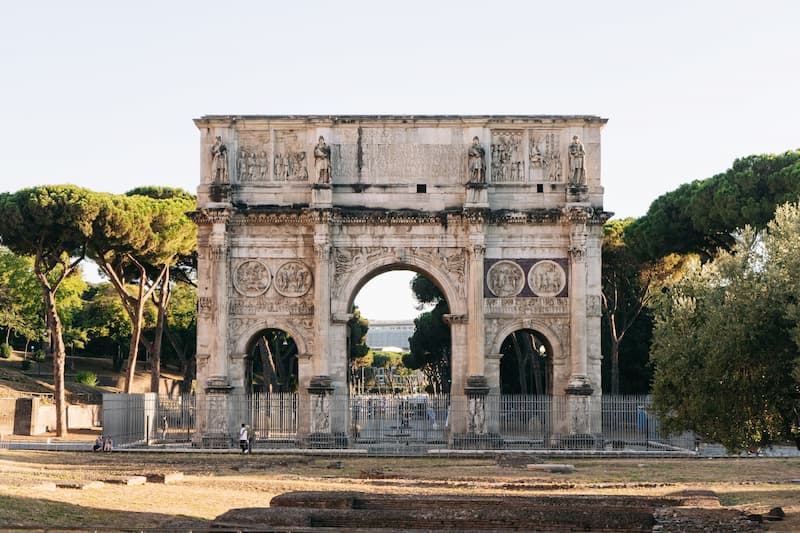
Photo by Fabio Fistarol on Unsplash
This arch, which is one of the most photographic points of the city, is one of the places you have to see on your mission to know Rome in 2 days. It is 21 meters high, 25 wide and has three arches, and has an inscription on the upper part, which had originally been made in bronze letters, which reads the following:
“To the Emperor Caesar Flavius Constantine, the greatest, pious and most blessed Augustus: because he, inspired by the divinity, and by the greatness of his mind, he has liberated the state of the tyrant and of all his followers at the same time, with his army and only by force of arms, the Senate and the People of Rome have dedicated this arch to him, decorated with triumphs”
9. Central Museum of Resurgence
The Central Museum of the Resurgence is located inside the Vittoriano complex, a monument made in honor of Vittorio Emanuele II, the first sovereign of Unified Italy. The walls of the space that the museum occupies are engraved in the marble with passages of texts that belong to the main witnesses of the country’s history.
This museum has different sections, where the first is dedicated to the protagonists of the Resurgence, where there are relics, paintings and documents from the history of the 19th century; the gallery aims at a journey that seeks to illustrate some historical themes in particular, such as the “Civic Guard”, political satire, relics, among other things; and a third section is devoted entirely to World War I.
The Central Museum of the Resurgence is a great way to learn about much of the history of Italy, and take advantage of your tour of Rome in 2 days to know while you learn. The institution can be visited every day, from 9:30 a.m. to 6:30 p.m., and the last check-in time is one hour before closing.
10. Altare della Patria
The Altare della Patria, also known as the national monument to Victor Emmanuel II (or Vittorio Emanuele II) or simply Il Vittoriano is a commemorative monument that was made n honor to the first king of unified Italy. It was designed by Giuseppe Sacconi in 1885 and is located between Piazza Venezia and the Capitoline Hill.
It is built with white marble and has a height of 135 meters wide and 70 meters high, although if we include the wings of the sculptures it reaches 81. It also has stairs, columns, various fountains, two sculptures of the goddess Victoria and sculptures of King Victor Emmanuel himself.
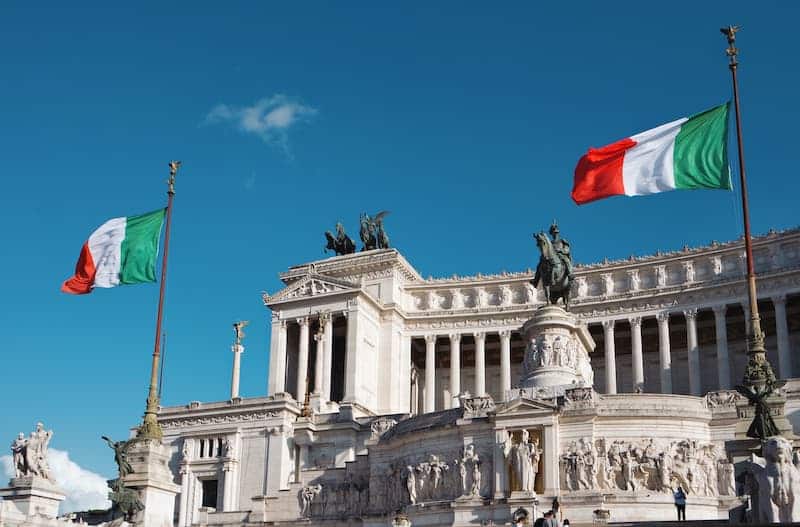
Photo by Michele Bitetto on Unsplash
There is located the Central Museum of the Resurgence and the tomb of the unknown soldier that was built after the First World War. It is one of the most striking monuments in the entire city and a place that you should undoubtedly include in the list of places to see on your walk through Rome in 2 days.
One of the greatest attractions of this place is the panoramic view obtained from the terrace, which can only be accessed through the panoramic elevators.
11. Trevi Fountain
It is considered that the Trevi Fountain or Trevi Fountain is the most beautiful in the world and one of the greatest representatives of the Baroque in Rome. The name of the fountain,” trevi “, means” three ways “and this is because in its location there was the intersection of three roads. It is undoubtedly one of the most beautiful places that you will visit on your tour of Rome in 2 days.
Its construction began in the year 1732 and was in charge of the architect Nicola Salvi. The god Neptune is represented there, towed by sea horses that are guided by tritons. The work was completed thirty years after the start of the work, and what draws a lot of attention is the contrast of the size of the fountain with that of the square.
A typical ritual that most people who visit the fountain comply with is toss a coin to make sure they get back to the city. There is no evidence that it works, perhaps there are many doubts, but with testing nothing is lost.
12. Piazza di Spagna
The Piazza di Spagna, or Plaza de España, is one of the most popular and most visited in the capital of Italy and takes its name from the Palace of Spain, where the Spanish embassy is located before the Holy See. It dates from the 18th century and has a triangular and elongated shape.
It is one of the places that you cannot miss while you are getting to know the city on your walk through Rome in 2 days, and you will be able to see the famous and monumental staircase of 135 steps, inaugurated in 1725. Those who dare to go up, may have a very different perspective of the square in general.
In this part of the city you can find monuments such as the Fontana della Barcaccia, which dates back to 1629; the Obelisk that was installed in 1789; the Trinità dei Monti church, the Column of the Inaculada, which is visited by the Pope every December 8, and the Embassy of Spain, to name a few.
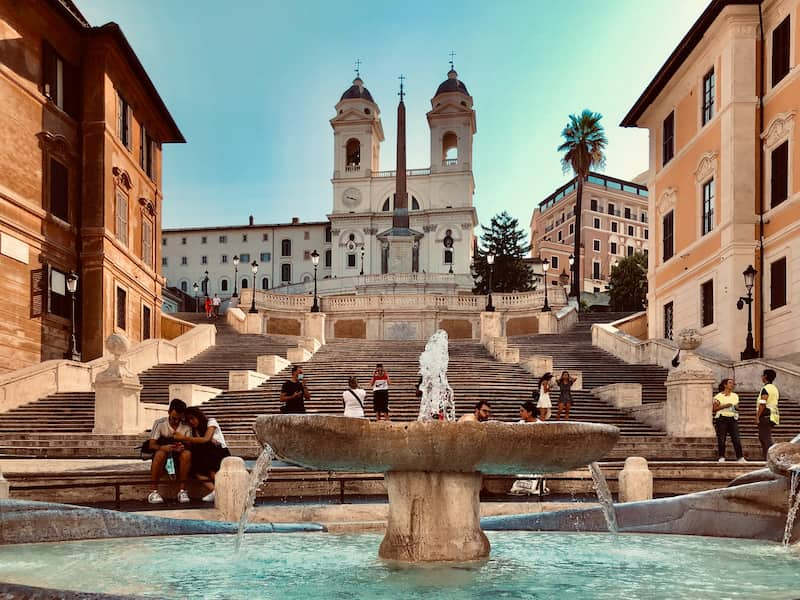
Photo by Daniel Basso on Unsplash
These are the 12 places that we recommend you to enjoy while you are touring Rome in 2 days. Some of them are free while for others you will have to buy a ticket, but without a doubt you will be able to take advantage of the best of the city in either of the two options you choose, or in both.
Undoubtedly the Italian capital has an infinity of places to see, visit, know and learn, and these are just some places so that you can get to know some key points of the eternal city in your 2-day stay in Rome.
